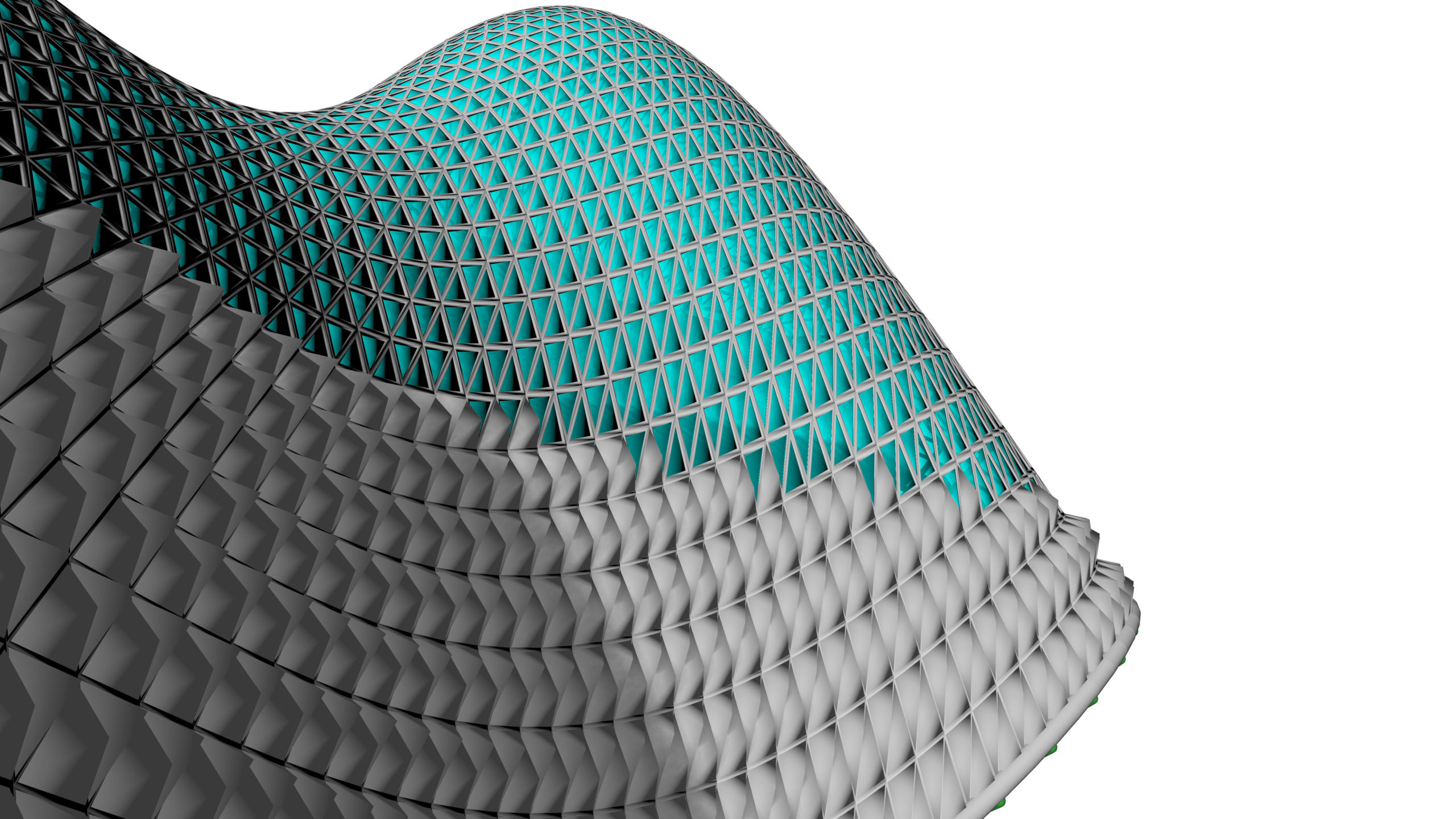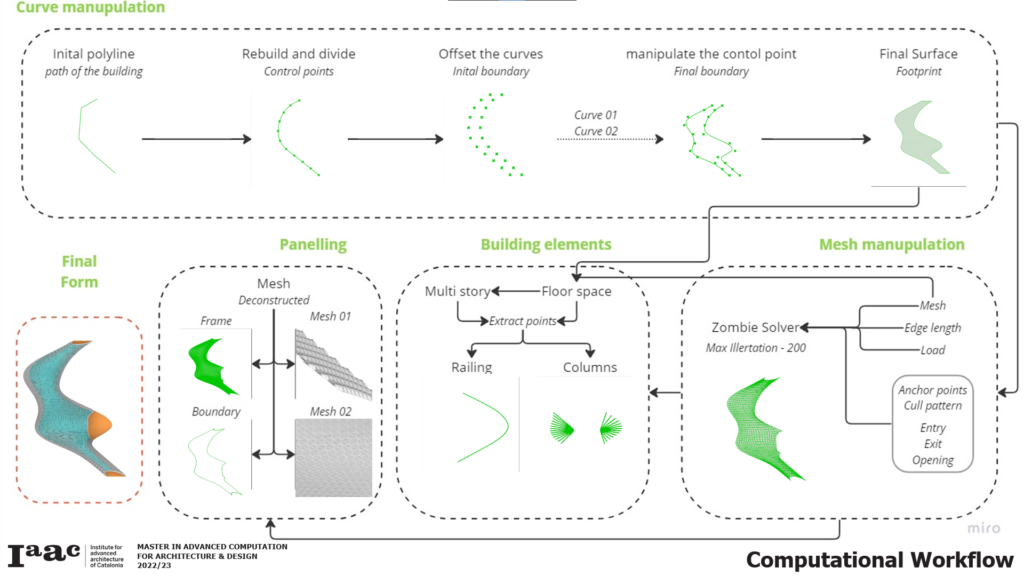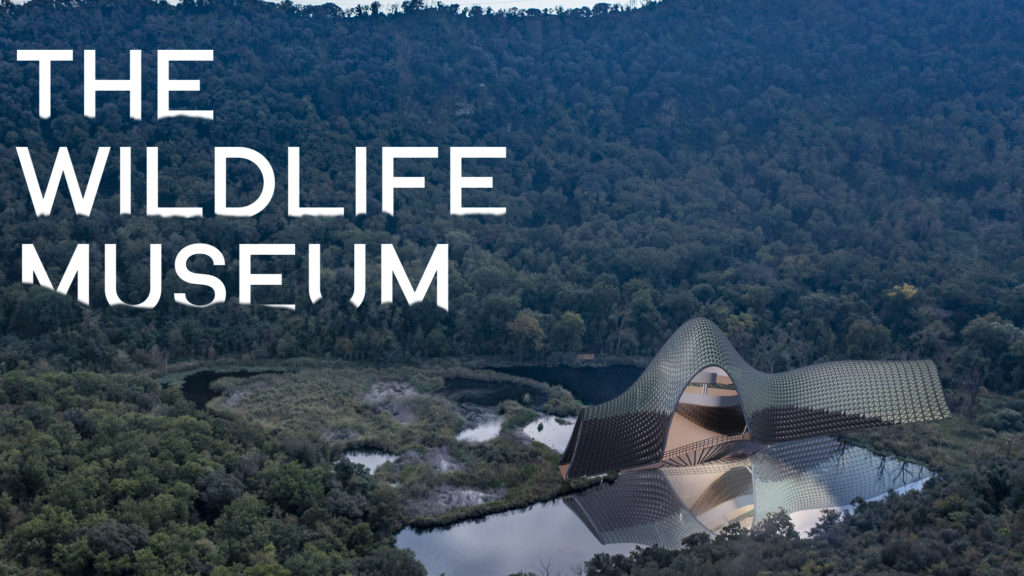
The concept basically underlines the spatial arrangement of the museum. The path starts from the narrow entrance, leads to the main exhibition place with wide surface area and multifloor level. Further, the exhibition space has a large opening which faces the whole structure.

The computational flow starts from assigning a polyline which illustrates the flow. The polyline then rebuild undivided to form a nerves curves. These curves form the initial boundary where the points are manipulated based on the spatial requirement forms a final footprint. The surface further converted to mesh with initial load factor. Here the anchor point from the naked mesh are refined based on the position of entry, exit and the opening. Later, all the load factors are fed to kangaroo solver to get the final geometry of the mesh. The building geometry like floor, wall and railing are made by extracting base points, then scaled, moved and excluded from the building surface. Coming to paneling, the kangaroo mesh geometry is deconstructed to form two types paneling system. These faces has two d three d panel along with the boundary support and panel frames created using weaverbird.

There are two type of panel system which are distinguished based on the height of the mesh face. Along with the mesh we can see the boundary beam and the trimesh frame as per the concept. The planning is a range linear starting from inter active zone towards the museum and back to the exit. The museum space has the most large area coverage along with the large opening. Also the first floor indicates the next level of museum which also has opening on the west of the building.



